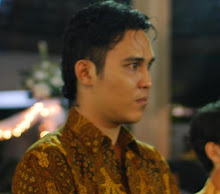Looking at the process of the making of keris accessories is the most proper agenda after seeing keris collections and keris decorating process. You will get complete description on how keris and its accessories are made. For this purpose, you may visit Banyusumurup village that has been developing since 1950s as central of keris accessories handicraft.
Banyusumurup village produces warangka or keris seath functioning to hold the keris. This area is located to the south of Giwangan bus terminal. From the crossroad of Giwangan bus terminal, you go southwards and when you get to the T-junction, you turn right to follow the road leading to Imogiri. There is no taxi or public transportation to get to this village.
The cool atmosphere of the village will greet you upon your arrival to this area. Even though it has developed as handicrafts village, the atmosphere of this village is similar to villages in general; there is no signing board or direction board as you find in Kasongan village that is famous for its earth ware handicrafts. Most of the craftsmen produce keris accessories at household scale and by far there is no gallery or special brand of keris accessories in this village. Nonetheless, there is one craftsman whose products are famous, namely Mr. Jiwo.
In Mr. Jiwo's house, you can see the making process of keris seath that generally is made from brass sheet. Almost the same as carving keris, the making of the seath also uses very simple equipments namely hammers, carving nails, and the holding base from the asphalt. This process is less sophisticated than the process of making keris decoration since there is no raw material melting process.
The brass sheet as the raw material is first made a plain seath then soldering process is done. Next, to hold the case firmly for carving process, the plain keris seath is attached to the surface of the base holder made from the melted asphalt. The carving process starts according to the motif to be made. The craftsmen told YogYES that most of the cases are dominated with flowers motifs.
After carving process, the keris case enters finishing step. In this step, the carvings on the seath are brought out to contast by using an iron bar. To get brighter color, the case is polished with acidic substance. In the past, many craftsmen made use of lemon juice to brighten the color, but now more craftsmen use HCl substance for practical reason.
If you visit the other homes producing the accessories, you can see the process of pendok making. In general, most of the handles are made from tamarind wood in two styles, namely Solo style that is bigger and curved and Yogyakarta style that is smaller. Some of them make keris handles with varied designs, ranging from animals such as lion and dragon to human figures. To get the expected handles, the wood is carved according to the prepared designs.
Different from the craftsmen in Serangan village who still depend on orders, the keris accessories craftsmen in Banyusumurup village keep on producing new accessories everyday. When YogYES asked one of the workers in Mr. Jiwo's house, at the average each person produces minimum of 2 cases everyday.
Please visit this village and you will see various keris cases, handles, and other keris accessories in various designs.

No comments:
Post a Comment